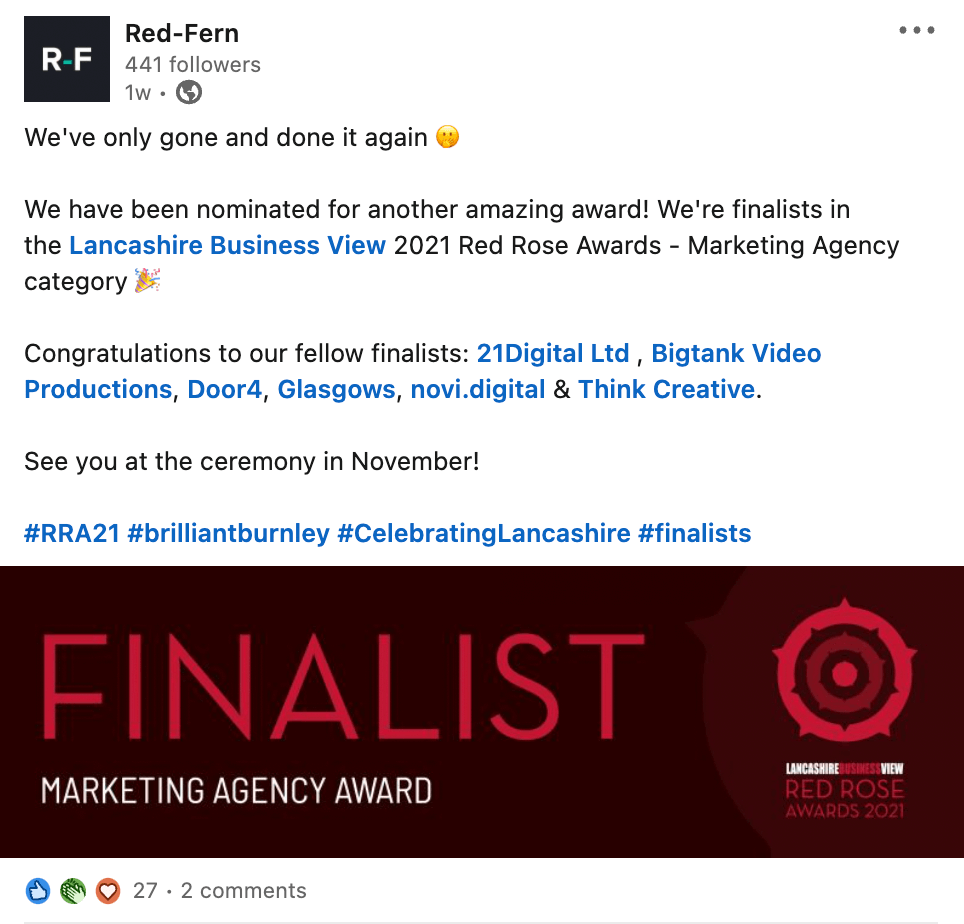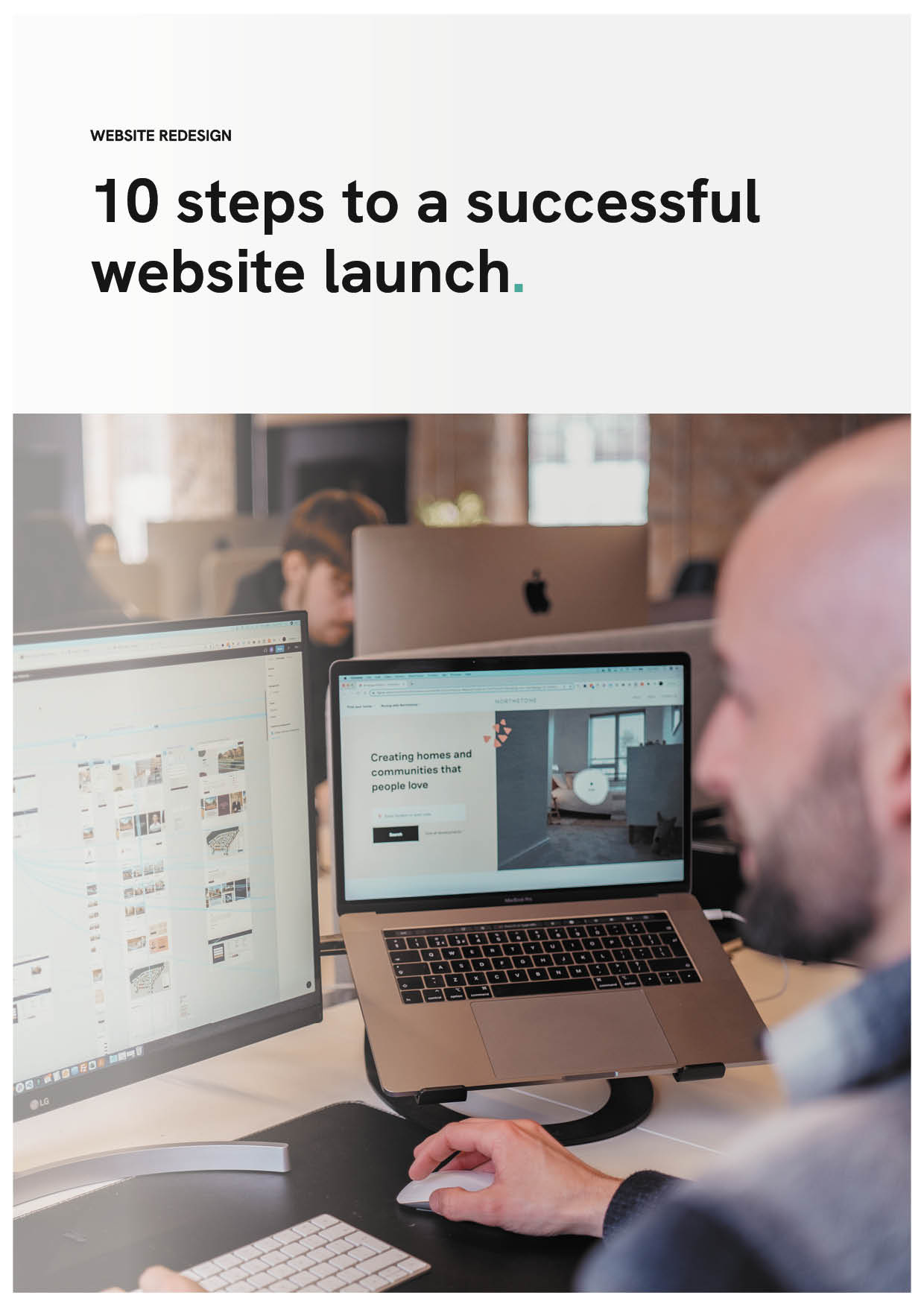With almost 740 million members, LinkedIn is a professional platform that’s bursting with opportunities.
LinkedIn is the perfect social media platform to utilise for sales, engagement and brand authority.
Sure, you can post content on LinkedIn and see what happens but they’re some key fundamentals you should consider if you want real success on the platform. LinkedIn is a noisy online environment – FACT. But with our useful tips, you’ll be able to break through the noise and positively impact your audience.
In this post, we’re going to be sharing all our tips on how to stand out on LinkedIn as a B2B manufacturer. From employee advocates to SEO considerations.
Posting frequency

Posting frequency on LinkedIn is crucial for success on the platform. Consistency = increased engagement and opportunities. If you have no structure, you’re posting whenever you feel like it and there’s no purpose behind your posts, your business will struggle to capture the attention of mindless scrollers and more importantly, your target audience.
On LinkedIn, it’s recommended that businesses post AT LEAST once a day over a five day period. Timings of posts are also important, research says the best time to post on LinkedIn is 8am to 3pm – Tuesday to Friday yielding the most success. But we recommend that you experiment and track your performance and adjust your posting schedule accordingly. Early morning, lunchtime and evenings do work well but this might differ for your audience.
Companies that post weekly see twice the engagement, while brands that post daily gain even more traction. It’s a no brainer, the more consistent you are with your posting – the more engagement you’ll receive. In turn, this consistent posting will build trust among your audience as they’ll gain familiarity with your content and will hopefully be left waiting for more.
Top tip: to make sure your posting strategy and consistency is aligned with your engagement goals, keep track of LinkedIn analytics with a social media management tool. We use HubSpot to track ours.
Brand consistency
“Brands are essentially patterns of familiarity, meaning, fondness, and reassurance that exist in the minds of people.” – Tom Goodwin
Posting valuable content is great and posting it frequently is even better. However, branding consistency is important and it shouldn’t be overlooked. Effective branding is all about holding to the core values of your business and what your mission is and then uniquely representing this across your advertising platforms consistently.
Branding makes a memorable impression on your consumers and it also allows customers and clients to know what to expect from you as a company. It clarifies what it is your business offers and it contributes to your overall brand image – how you wish to be perceived.
Branding generates engagement, new customers, business value and customer loyalty. It’s a way your customers can distinguish your business from your competitors. On LinkedIn, branding should be consistent in accordance with your other advertising platforms – Facebook, Twitter, Instagram, Snapchat and more. Think about your profile picture, your business header and banner image as examples.

Branding elements that need to be consistent on your Linkedin page
- Create a compelling company page that showcases your incredible business efforts – pages with complete information get 30 percent more weekly views. If you haven’t already, then you need to set up a company page on the professional network. This page should include a profile picture, description and a banner. Remember, keep it all consistent with your website and other advertising platforms.
- Logos, colour palettes and social media graphics. All of these should be consistent with your current brand guidelines. This consistency will build familiarity in your audience and companies with logos on their page get six times more visits.
- The tone of voice, communications and all messaging need to be in the same direction as your existing content and branding. This consistency will represent your brand positively and build valuable loyalty with your target audience.
- Each communication you have with a lead on LinkedIn is growing the relationship and building awareness and trust. This communication and tone of voice also need to be consistent. Maybe you’ll choose to sign off messages in a unique way, maybe you’ll end each message with a branded hashtag or perhaps you’ll call your customers a specific name to make them feel a part of your brand. Whatever you choose, keep it unique, friendly and be consistent.
- LinkedIn is the second most popular social media platform used by B2B marketers. With the popularity there, it’s important that the communications you’re sharing are professional. LinkedIn is the world’s largest professional platform so your tone of voice needs to be adjusted accordingly.
- Customise your call to action button on your profile so it aligns with your ethos and your business goals. You can also track to see who’s clicked it via the LinkedIn analytics tool.
SEO considerations
Optimising your website is essential and if you’ve got a great marketing team or you’re utilising the expertise of a digital agency your SEO strategy will be on TOP FORM (we hope!).
But the same applies to your LinkedIn page. SEO needs to be considered for your LinkedIn. This will ensure your business gets discovered on the platform but also via different sources. LinkedIn pages are crawled by search engines so ensuring they’re optimised is a great hack for extra leads and engagement.
With LinkedIn optimisation, you can increase your odds of showing up in the right web searches by following a few simple practices. 80 percent of B2B social media leads come from LinkedIn so it’s important that you’re creating great LinkedIn content but also giving it a brilliant chance of succeeding and reaching the appropriate audiences.
LinkedIn SEO best practices:
Use keywords
If you’re familiar with keywords, you’ll know their function within SEO. They’re the keywords and phrases your audience will use to search online. Sometimes, what people search for isn’t always what you call your services or products – it could be something unrelated but important in your industry.
To determine which keywords you could use on your LinkedIn page, a good place to start is to consider your industry, location, and specialities. Once you’ve identified this, you can then start typing phrases into Google Search Console/Keyword Planner, Moz Keyword Explorer or SEMRush to identify the best keywords.
The first place you can incorporate keywords is in your LinkedIn’s tagline. This tagline sits underneath your company’s LinkedIn page name. This is your elevator pitch and should describe what you do and serve in one line. This’ll contribute to why your leads click on your page and why they don’t.
Write an ‘about’ section
With all your relevant keywords in mind, write an engaging ‘about’ section on your profile. Think about the questions your audience might want answers to and also think about what makes you different to your competitors. This is your chance to communicate what sets you apart from the other businesses in your industry.
- Vision. What future do you want to help create? What’s your vision for your industry and how will you help make that happen?
- Mission. How do you create that future and what’s your process of completing expert products, work and services?
- Values. Who are you, how do you work and what do you follow as a collective?
- Positioning. What makes your brand different, what helps you stand out? Be innovative here.
- Products/Services. This isn’t a necessity but it’s helpful to include it. A shortened list can be used here to explain what you provide and what you offer.
Link to your website
Don’t miss the opportunity, wherever you can, include a link to your website. Whether that’s your CTA button or in the ‘about’ section of your profile. This can be used as a primary resource for your customers, prospects and leads and it’ll help with internal linking for SEO. Have it displayed somewhere easy to access and your website views will definitely increase.
Additional company information
Make sure you utilise all the information that you can display on a LinkedIn page. Fill in every detail – the size of your company, the industry you operate in, business specialities, location and start following some companies you admire. All of this will build upon your brand authority and establish a page that’s trusted and likely to gain traction and engagement. All of this is crucial before posting any content.
Keep everything updated
Being reactive, having a content plan in place and remaining consistent with your LinkedIn posting will not only gain the attention of your audience but it’ll also help with your SEO. Google loves updates and it loves fresh content. New content gets indexed and it helps the search engine filter through and find your page as ‘active’, proving your page to be valuable and displaying it higher up in the search results.
If there’s an applicable trend you can create content from or a hashtag you can get involved with – do it. The same goes for viral news and industry-related topics that are trending. See where you can get involved and you’ll be one step closer to reaching the right consumers.
Eye-catching content
Providing valuable content to your audience is essential for building consumer relationships, helping leads through the buyer’s journey and increasing brand engagement. LinkedIn offers a lot of content diversity which is great and it allows a lot of room for creativity – you can share images, polls, videos, pdfs, docs, text posts, interactive live videos, podcasts and MORE.

The diversity makes it one of the most used platforms for content creation and 94 percent of B2B marketers use LinkedIn to distribute their content. Utilising key communication and branded imagery is a great place to start – images get two times higher engagement rates than posts without images.
Interactive content is one of the best choices – whether that’s sharing your own company podcast or utilising videos, both offer great results and LinkedIn users are 20 times more likely to re-share a video post to their own audiences – this is great for brand exposure.
LinkedIn content considerations
Before curating content, you need to ensure the content you’re creating has a purpose, direction and it’s providing value to your audience. Without these points considered, your content will serve no purpose and you’ll be wasting valuable time and resources.
Here are some questions to consider before curating the content:
- Is this piece of content teaching my followers something they don’t know?
- Is this content providing an actionable tip?
- Is this content entertaining in some way?
- Does this piece of content answer a question or solve a problem?
- Will this piece of content leave my audience wanting more?
Once you know your vision and direction, you can experiment, create and track your results. Your content should always be authentic, on-brand and consistent with everything you’ve already shared. This will contribute to your brand image and provide unrivalled value to your audience.
LinkedIn content top tips:
- Ensure your imagery matches your headline – this will strengthen the content you’re sharing, keep things consistent and provide additional value to your audience.
- Include CTA’s with links – posts that include links can have up to a 45 percent higher follower engagement than updates without links.
- Know your audience – understand what motivates them and share content accordingly. Seek to be helpful, understanding, supportive and informative.
- ‘@’ mention people who are featured in your content or add a location tag – this will help you reach wider audiences and gain additional exposure.
- Be reactive – see what content is already gaining momentum on LinkedIn and see what’s trending in your industry. You could create content off the back of this and become a trending business and position yourself as a thought leader.
- Utilise hashtags in your post – don’t overcrowd your post but a few branded and industry hashtags will work a treat and help you again, gain exposure to new audiences and customer profiles.
- Experiment with your media output – don’t let your page become stagnant. Keep your audience engaged and excited by utilising the power of videos, images, short posts, long posts, emojis and more.
- Blog DIRECTLY on LinkedIn – although it’s great to share existing content on your LinkedIn page but another way to provide value to your audience is the utilise article function on LinkedIn. This allows you and your employees to create articles that post directly to LinkedIn – a great way to generate content and provide value to your audience.
Employee sharing

Showing the people behind your business is essential. Your team will help humanise your brand, they’ll be great advocates for your services and products and their LinkedIn profiles are a hub of opportunities (if they have lots of connections already).
Humanising your brand is a great chance to build vital trust among your audience. People trust people and when your audience knows who is behind your mission, they’re more likely to trust it and potentially buy into it.
The most effective marketing can sometimes be getting your team involved and utilising their existing connections for engagement and connectivity. Content shared by employees has seen two times higher engagement than when it’s only shared by a company or business.
The content your employees share needs to be on-brand, it needs to be professional and it needs to align with the business goals. Of course, it can be personal but it’s contributing to your brand image so it needs to be crafted correctly.
A typical company’s employee base has 10 times the social reach of the company itself. So to utilise this success properly they’re some key tips you should consider.
- Get your content or marketing team to draft out some social shares employees can post on their pages. This way they’re crafted with specific goals and CTAs in mind.
- Get all of your employees to re-share your posts to their profile. This can be part of their daily tasks and it will help you strike some traction on their profiles. We’re all for that here at Red-Fern, our team are big LinkedIn advocates!
- In HubSpot, you can schedule employee content ahead of time and track all of the relevant KPIs too. Be organised, schedule the content and track the impact to measure improvements.
- Customise each employee message depending on their target audience. You don’t want to be sharing the same message across 10 different profiles. Be target audience specific and personal.
- Utilise your employees by encouraging them to engage in company updates, industry conversations and more. The more active they are on LinkedIn the more likely they’ll be to attract consumers to your site and services.
LinkedIn is booming with incredible opportunities and it’s not slowing down anytime soon. In fact, views are up 60 percent in the LinkedIn feed from last year and MILLIONS of professionals create over 130 thousand articles PER WEEK.
Unlock your potential on LinkedIn with our help!
LinkedIn enables B2B manufacturers to reach the right audiences, in the right environment, with effective engagement. Incredible opportunities can also bring confusion and challenges for B2B brands. We understand and that’s why we’re here to help.
In our FREE downloadable, we’ve covered everything you need to know about how B2B manufacturers can use LinkedIn to drive leads and sales conversations. We’ve included our TOP tips and broken everything down for you. Download your copy TODAY and unlock your brand’s potential!

